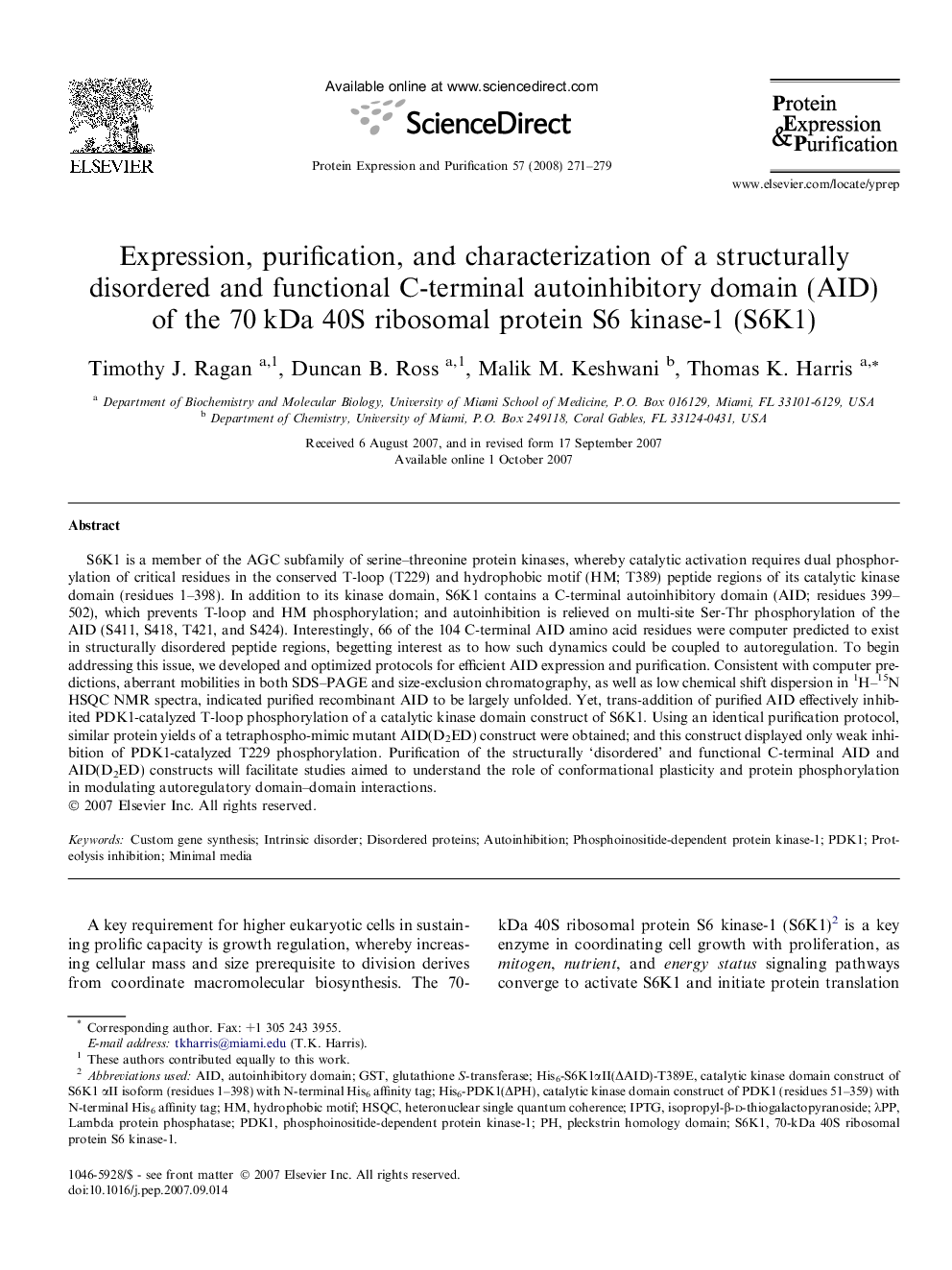| Article ID | Journal | Published Year | Pages | File Type |
|---|---|---|---|---|
| 10843446 | Protein Expression and Purification | 2008 | 9 Pages |
Abstract
S6K1 is a member of the AGC subfamily of serine-threonine protein kinases, whereby catalytic activation requires dual phosphorylation of critical residues in the conserved T-loop (T229) and hydrophobic motif (HM; T389) peptide regions of its catalytic kinase domain (residues 1-398). In addition to its kinase domain, S6K1 contains a C-terminal autoinhibitory domain (AID; residues 399-502), which prevents T-loop and HM phosphorylation; and autoinhibition is relieved on multi-site Ser-Thr phosphorylation of the AID (S411, S418, T421, and S424). Interestingly, 66 of the 104 C-terminal AID amino acid residues were computer predicted to exist in structurally disordered peptide regions, begetting interest as to how such dynamics could be coupled to autoregulation. To begin addressing this issue, we developed and optimized protocols for efficient AID expression and purification. Consistent with computer predictions, aberrant mobilities in both SDS-PAGE and size-exclusion chromatography, as well as low chemical shift dispersion in 1H-15N HSQC NMR spectra, indicated purified recombinant AID to be largely unfolded. Yet, trans-addition of purified AID effectively inhibited PDK1-catalyzed T-loop phosphorylation of a catalytic kinase domain construct of S6K1. Using an identical purification protocol, similar protein yields of a tetraphospho-mimic mutant AID(D2ED) construct were obtained; and this construct displayed only weak inhibition of PDK1-catalyzed T229 phosphorylation. Purification of the structurally 'disordered' and functional C-terminal AID and AID(D2ED) constructs will facilitate studies aimed to understand the role of conformational plasticity and protein phosphorylation in modulating autoregulatory domain-domain interactions.
Keywords
Related Topics
Life Sciences
Biochemistry, Genetics and Molecular Biology
Biochemistry
Authors
Timothy J. Ragan, Duncan B. Ross, Malik M. Keshwani, Thomas K. Harris,
